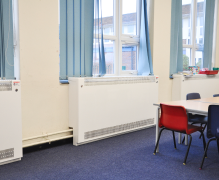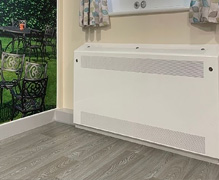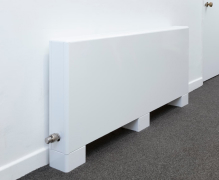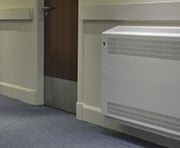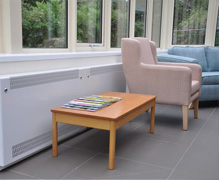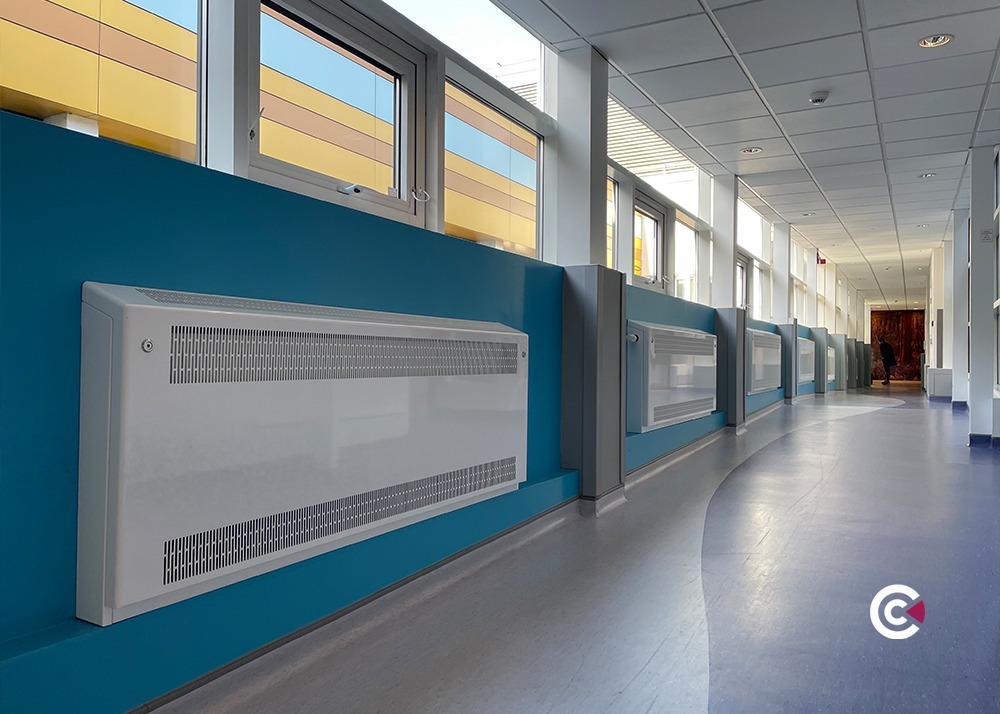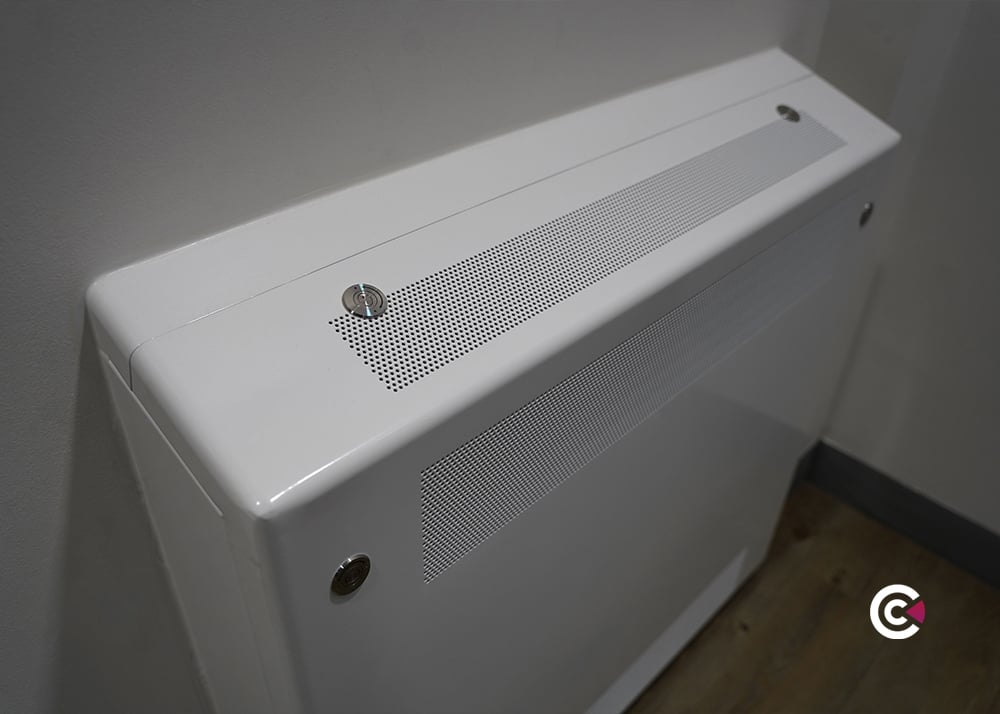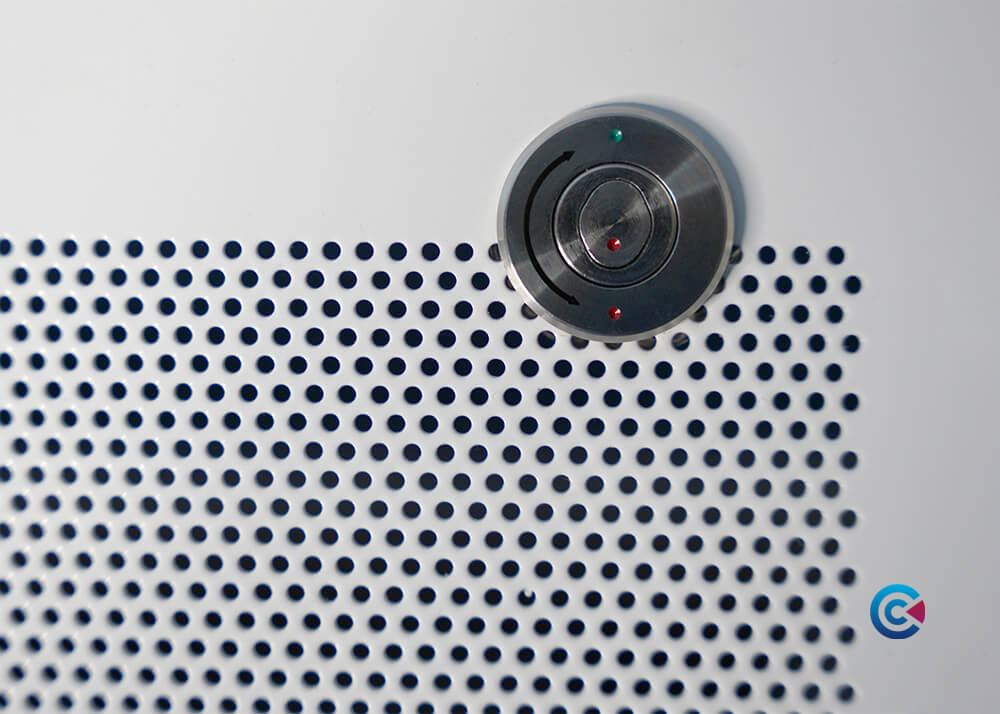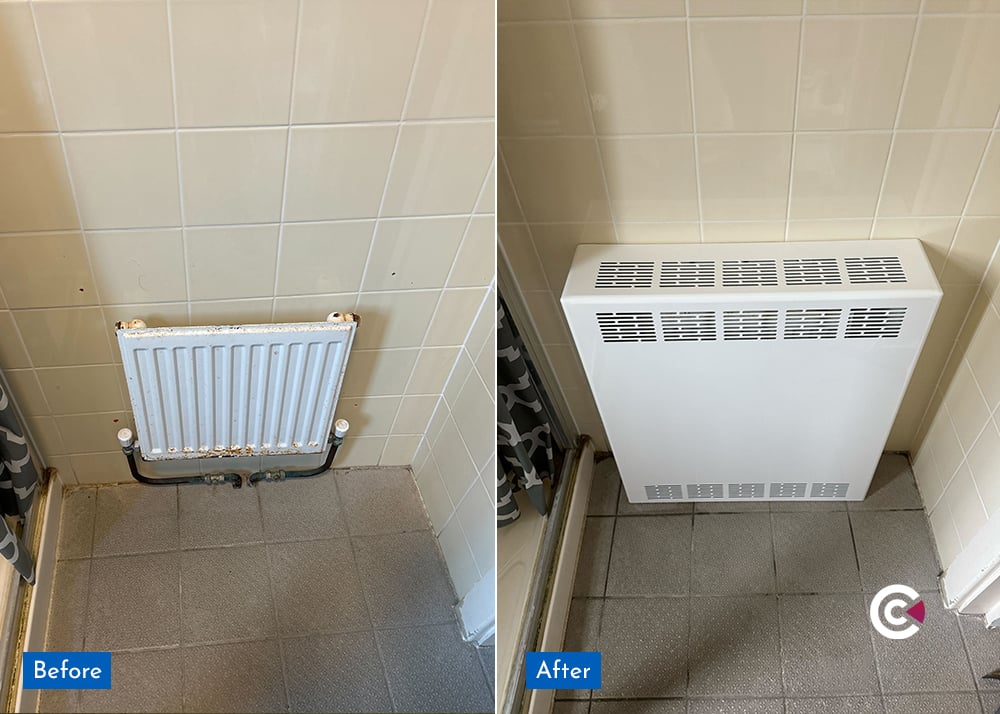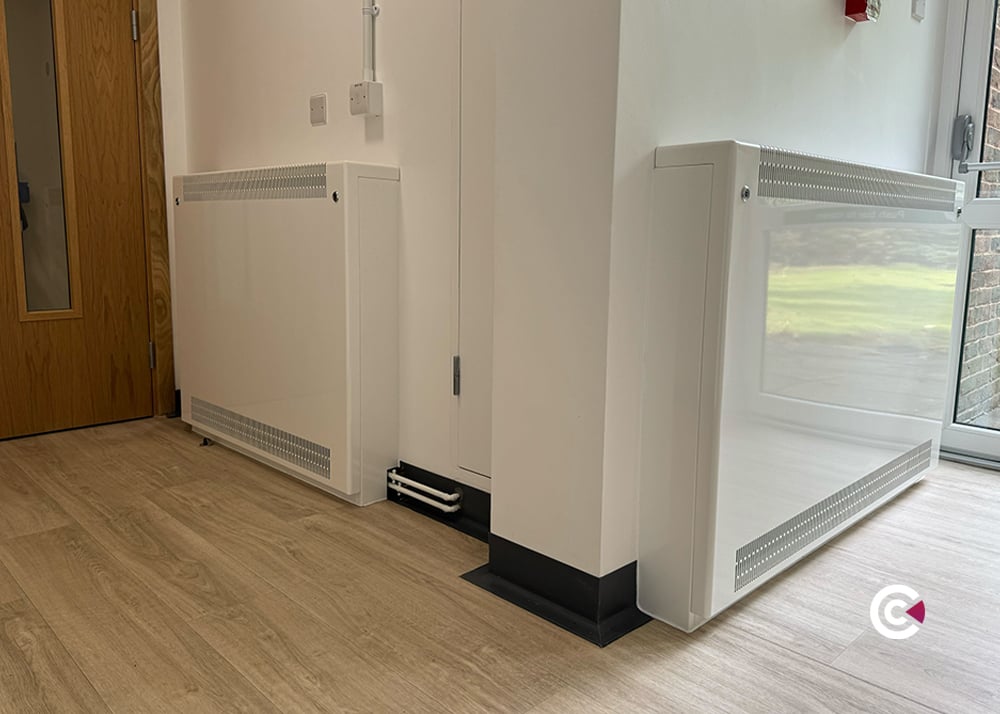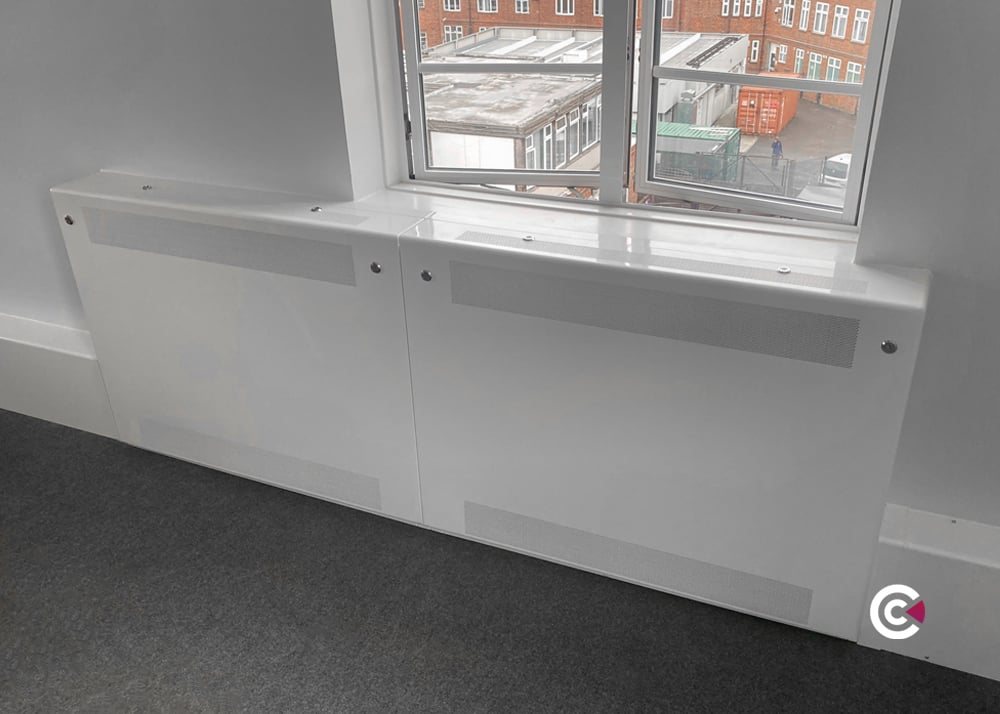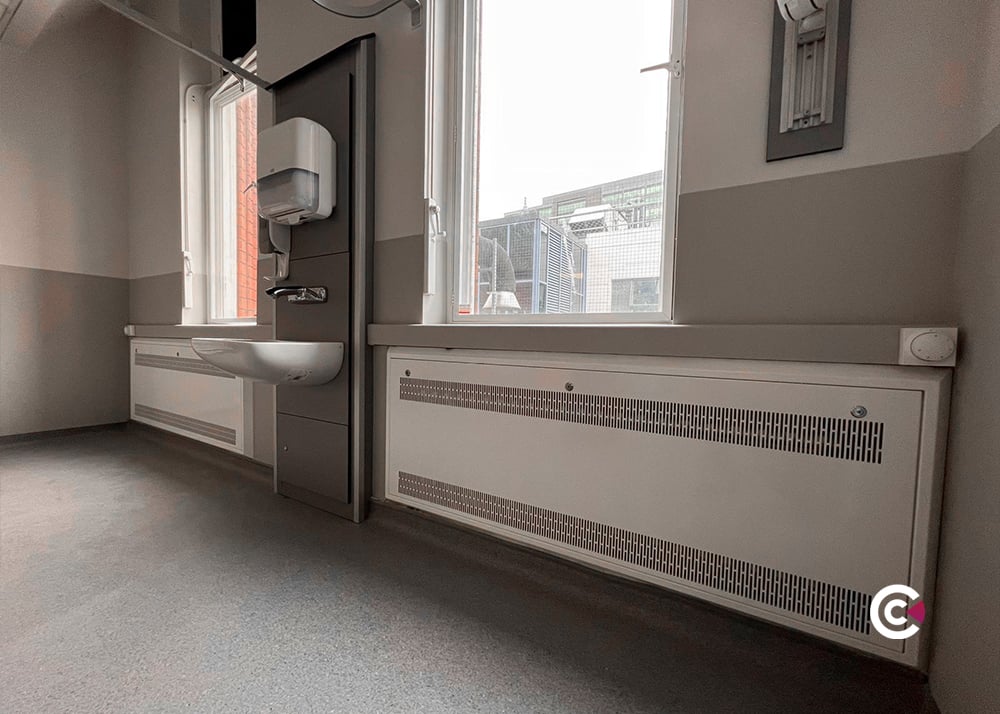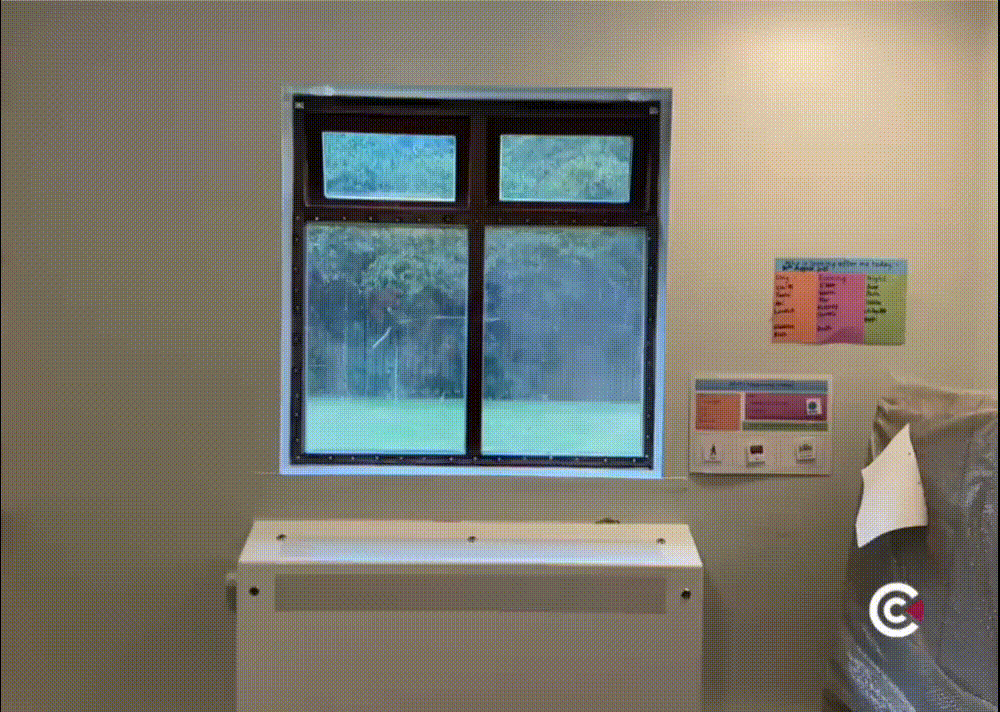When it comes to specifying radiator guards, understanding the difference between wall-mounted and floor-mounted options can make a significant difference to safety, performance, and installation success.
Add in the choice between flat top and sloping top designs, and it’s easy to see why specifiers benefit from clear guidance tailored to different environments.
In this post, we’ll break down the pros and cons of each mounting style, explain how the choice affects anti-ligature compliance, and help you decide when a sloping top is the right call for your setting.
Wall-mounted Radiator Guards
Wall-mounted radiator guards are affixed to the wall and hang with clear space beneath the unit. They come with a base plate as standard.
Key Benefits:
- Easier to clean beneath the guard (especially helpful in healthcare and schools)
- Streamlined look that integrates well into modern interiors
- No interference with flooring or skirting
Installation Considerations:
- The wall must be strong enough to support the unit especially if a robust metal guard is required
- Fixings must be secure and tamper-proof (Contour's guards use internal fixings to reduce interference and maintain aesthetics)
- In mental health settings, Contour advises a minimum of 150mm clearance to prevent ligature use beneath the unit
Floor-mounted Radiator Guards
Floor-mounted guards sit directly on the floor and are fixed into both the wall and floor for enhanced stability.
Key Benefits:
- Added strength and rigidity; ideal for high-impact or high-risk areas
- Prevents access underneath the guard, which may be preferable in mental health or SEN environments
- Provides a secure, closed-in aesthetic where wall strength is limited
Installation Considerations:
- Floor surface must be suitable for drilling and secure fixing
- Cleaning beneath the guard can be more difficult unless carefully planned
- Slightly more material and fixings may be needed than wall-mounted alternatives
Flat Tops vs Sloping Tops
The top of a radiator guard might seem like a cosmetic choice, but it carries major functional and safety implications particularly in mental health and secure environments.
Flat Tops:
- Provide a neat, modern finish and can align with windowsills or shelving
- Best suited to general use areas where ligature or climbing risks are not a concern
Sloping Tops:
- Designed with a 20° angle to prevent climbing or items being placed/stored on top
- Essential in anti-ligature settings, CAMHS units, SEN environments, or secure care
- Helps reduce cleaning time as dust and clutter don’t collect on the surface
- Available on both wall- and floor-mounted models in the DeepClean and DeepClean Extra ranges
Matching Guards to Environment
When choosing between wall-mounted vs floor-mounted and flat vs sloping top, it’s important to consider:
|
Environment |
Mounting Type |
Top Style |
Notes |
|
Acute mental health ward |
Floor-mounted |
Sloping |
Full anti-ligature solution with 2mm steel |
|
CAMHS or PICU |
Wall- or floor-mounted (150mm minimum clearance for wall) |
Sloping |
Minimises self-harm and climbing risk |
|
Education / SEN schools |
Floor-mounted |
Sloping or Flat (depending on risk level) |
Sloping preferred for safety |
|
Hospital wards (non-mental health) |
Wall-mounted |
Flat |
Cleaner access below, easier maintenance |
|
Offices / Admin areas |
Wall-mounted |
Flat |
Ideal for visual appeal and accessibility |
Customisation and Compliance
All of Contour’s radiator guards are made to measure. This ensures the guard fits perfectly around the radiator, pipework, and any skirting boards minimising site modifications and reducing installation time.
Anti-ligature configurations are manufactured with safety front of mind, including:
- Internal fixings
- Sloping tops
- Minimum height guidelines
- IP3X-rated grilles
- Optional strengthening struts and 2mm steel
With Contour, you’re not just choosing a style, you’re specifying for safety, hygiene, longevity, and reduced lifecycle cost.
Not Sure Which Guard is Best for Your Setting?
Speak to our team about your space, risk level, and cleaning or maintenance requirements and we’ll recommend the best configuration for your needs.
📧 sales@contourheating.co.uk
📞 01952 290 498
🗓️ Or book a site survey to get personalised advice on your next project.
-1.png)


